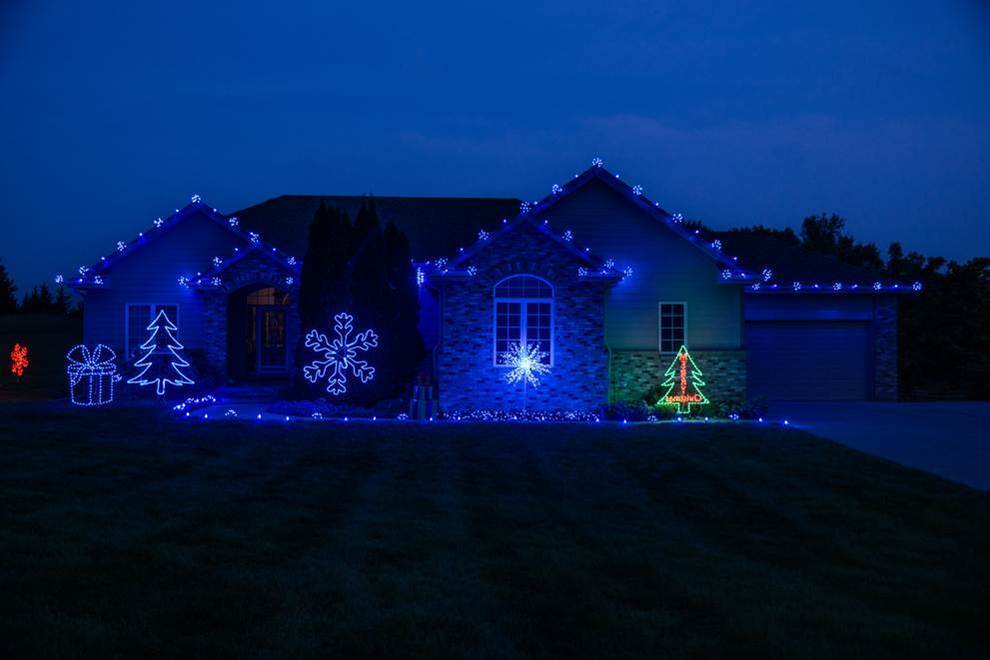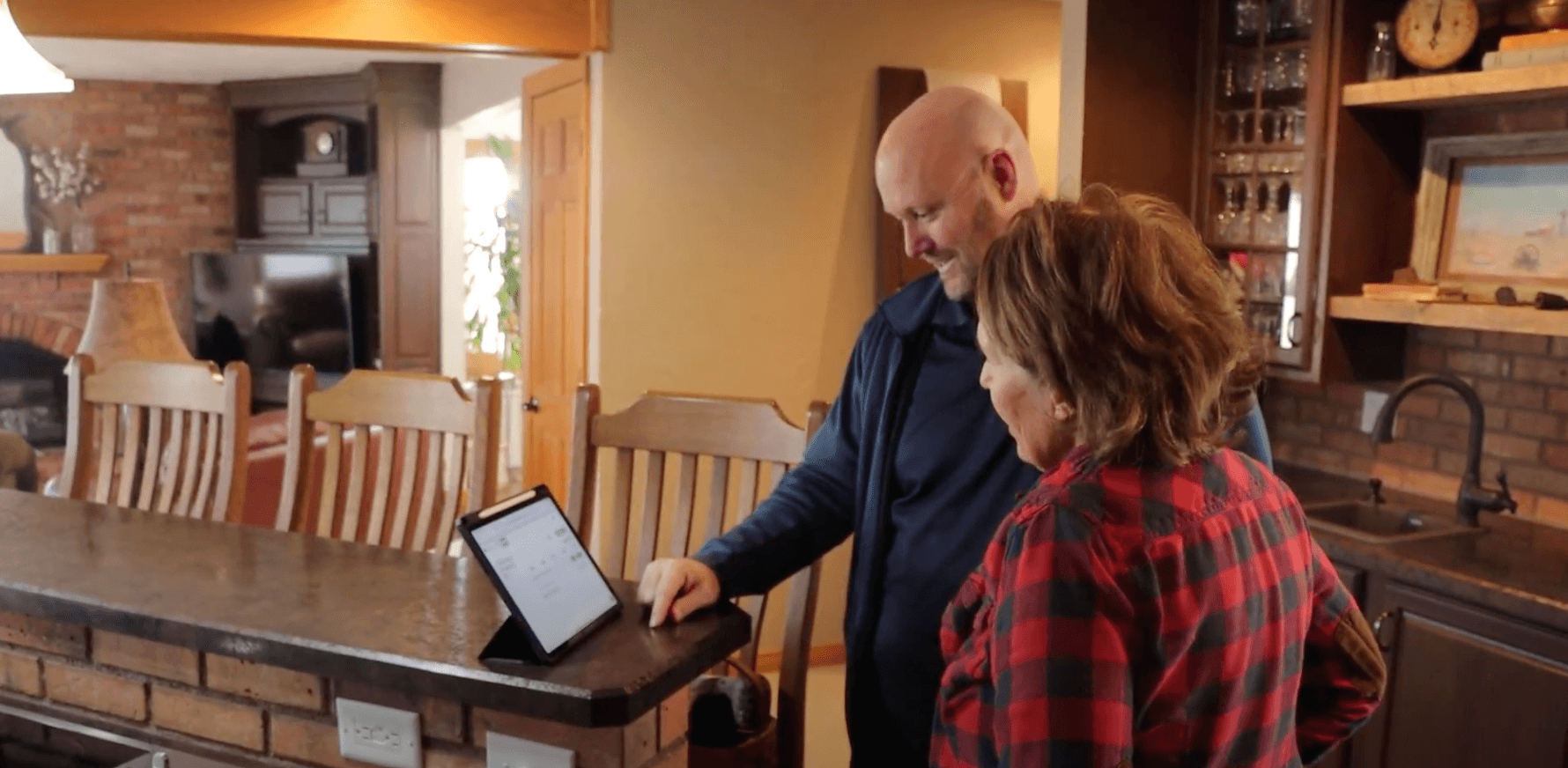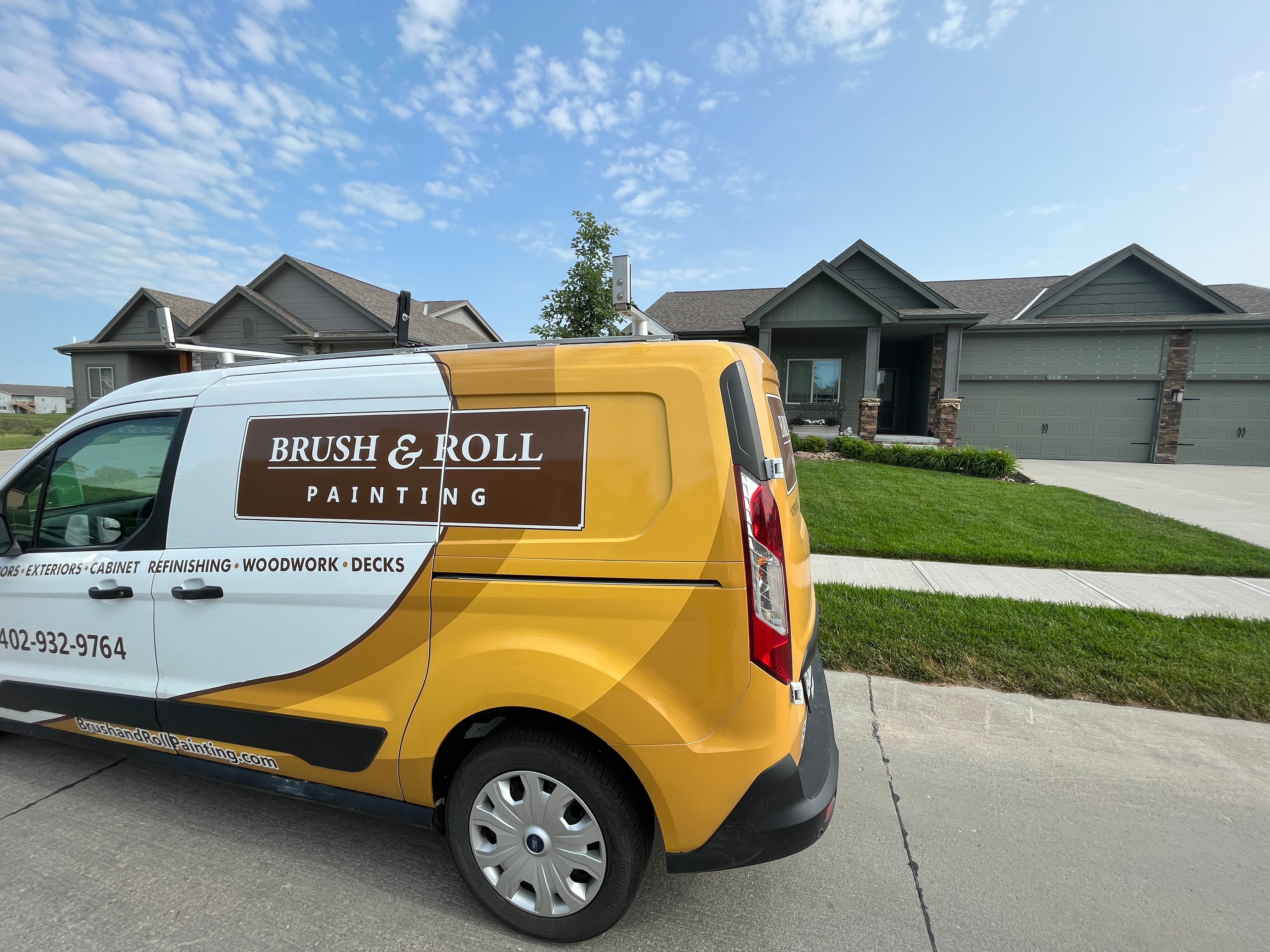-Aug-15-2024-05-23-06-5440-PM.png?width=800&height=418&name=Blog%20Post%20Image%20Size%20(1)-Aug-15-2024-05-23-06-5440-PM.png)
Ever stood in your kitchen, staring at those tired old cabinets, thinking, "I could totally paint these myself"? You're not alone. Many Omaha homeowners have been there, armed with a Pinterest board and a can-do attitude. But here's the kicker: cabinet painting isn't as simple as slapping on a coat of paint and calling it a day. In fact, it's a bit like trying to parallel park a semi-truck – possible, but it has it’s challenges.
At Brush & Roll Painting, we've seen it all. From sticky drawers to patchy finishes, we've helped countless Omaha homeowners rescue their DIY cabinet painting projects. With over two decades of experience transforming kitchens across the Omaha area, we've become experts for all things cabinet painting related.
In this article, we will go over 8 common mistakes that we see homeowners in Omaha make when they are DIY painting their kitchen cabinets. By the end of reading this article, you'll know exactly what not to do when painting your cabinets and how to do it right.

1. Skipping Prep Work for Painting Cabinets
Before you open that paint can, let's talk about the most crucial step that many DIYers skip: preparation.
Proper prep work is like laying a good foundation for a house. Without it, everything else is bound to crumble. Here's what happens when you skip this step:
- Paint doesn't adhere properly, leading to peeling and chipping
- Grease and grime show through the new paint
- Uneven surfaces become even more noticeable
So, what should you do instead? Here's the right way to prep your cabinets:
- Remove all hardware , doors, drawers, and label each piece (trust us, future you will thank present you for this)
- Clean the cabinets thoroughly with a degreaser
- Sand the surfaces lightly to create a better surface for the products to adhere to
- Apply a high-quality primer designed for cabinets
Fun fact: According to a survey by the National Association of the Remodeling Industry, proper surface preparation can extend the life of a paint job by up to 50%.
2. Quickly Painting Your Cabinets
We get it. You want your new kitchen yesterday. But rushing through the painting process is like trying to bake a cake in half the recommended time – it just doesn't work.
Hurrying can lead to:
- Uneven coverage
- Drips and runs in the paint
- Smudges and fingerprints in semi-dry paint
The right way? Slow and steady wins the race:
- Apply thin, even coats of paint
- Allow proper drying time between coats (usually 24 hours)
- Wait at least 3-5 days before reattaching hardware and using the cabinets
Remember, Rome wasn't built in a day, and your dream kitchen won't be either. But trust us, the wait is worth it!

3. Cheap Paints for Cabinets
We've all been there - standing in the paint aisle, eyeing that budget-friendly can and thinking, "How different can it really be?" Turns out, when it comes to cabinet paint, the difference can be huge.
Problems with using cheap products:
- Poor coverage requiring multiple coats
- Uneven finish with visible brush strokes
- Lack of durability, leading to chips and scratches
Here's the scoop on why professional-grade products are worth every penny:
- Better pigments for richer, more even color
- Superior binders for improved durability and adhesion
- Specialized formulas designed specifically for cabinets and wood coating
Remember, your cabinets take a daily beating from greasy hands, slamming doors, and the occasional enthusiastic chef. Professional-grade products are formulated to stand up to this abuse, keeping your kitchen looking fresh for years to come.
Keep in mind professional grade products are recommended for those in the name- professionals. At Brush & Roll Painting, we use a 2K Polyurethane for cabinet painting. The product we use is called Milesi and requires experience and skill to know how to handle and apply it properly.
So, while it might be tempting to save a few bucks on paint, remember: in the world of cabinet painting, you often get what you pay for. Investing in quality products upfront can save you from costly do-overs down the road. After all, nobody wants to turn their "quick weekend project" into a never-ending renovation saga.
4. Ventilation for Cabinet Painting
Painting in a poorly ventilated area is like trying to have a dance party in a phone booth – it's uncomfortable and potentially dangerous.
Lack of ventilation can cause:
- Prolonged exposure to paint fumes
- Slower drying times
- Dust and debris settling in wet paint
Instead, create a well-ventilated workspace either in a basement or garage:
- Open windows and doors
- Use fans to circulate air
- Consider using a respirator for added safety

5. Sanding Before Cabinet Painting
Ever tried to write on a bumpy surface? That's what painting unsanded cabinets is like. Many DIYers skip this crucial step, thinking a quick wipe-down is enough. Spoiler alert: it's not.
Consequences of skipping the sanding:
- Paint refuses to stick, leading to peeling and chipping
- Uneven, bumpy finish that screams "amateur hour"
- Old stains and imperfections showing through the new paint
Let's smooth things out with the right approach:
- Start with medium-grit sandpaper (120-150 grit) to remove the old finish and smooth out imperfections
- Progress to fine-grit sandpaper (220 grit) for a super-smooth surface
- Use a tack cloth to remove all dust before painting
Pro tip: For those tricky corners and decorative details, sanding sponges are your new best friend. They bend and flex to get into all those nooks and crannies.
Remember, sanding isn't about removing all the old finish - it's about creating a surface that the new paint can really grab onto.
6. Primer for Cabinet Painting
Skipping primer is like forgetting to put on sunscreen at the pool or lake – you might not notice immediately, but you'll regret it later.
Painting without primer can result in:
- Uneven color
- Poor paint adhesion
- More coats needed for coverage
Here's how to prime like a pro:
- Choose a high-quality primer designed for cabinets
- Apply a thin, even coat
- Allow it to dry completely before painting

7. Using the Wrong Cabinet Painting Tools
Using the wrong tools for cabinet painting is like trying to eat soup with a fork – frustrating and ineffective.
Common tool mistakes:
- Using low-quality brushes that leave bristles behind
- Choosing rollers with the wrong nap length
- Attempting to spray paint without proper equipment
The right tools for the job:
- High-quality synthetic brushes for a smooth finish
- Foam rollers for large, flat surfaces
- Consider using a paint sprayer for a truly professional look (but be warned, this takes practice!)
- Cutting Corners with Cheap Products: A Penny-Wise, Pound-Foolish Approach
8. Improper Hardware Installation on Cabinets
After all that hard work, the last thing you want is crooked handles or loose hinges. Yet, this is a common finale to many DIY cabinet painting projects.
Consequences of careless hardware reinstallation:
- Misaligned doors and drawers
- Chipped paint around hardware
- Functionality issues
The right way to wrap things up:
- Wait until the paint is fully cured (usually 3-5 days)
- Use the original screw holes whenever possible
- Consider upgrading to new hardware for a fresh look
Pro tip: Take a picture of your hardware layout before removal. It's like having a map when you're putting everything back together!
Painting Your Cabinets
We've taken quite the journey through the world of DIY cabinet painting. From sticky situations to smooth finishes, we've covered it all. Remember those tired old cabinets we talked about at the beginning? By avoiding these common pitfalls, you're well on your way to a kitchen transformation that'll make your neighbors green with envy (or whatever color you choose for your cabinets).
Keep in mind, kitchen cabinet painting is an investment. If you are looking for long lasting, durable results, you may want to consider hiring a professional cabinet painting company.
At Brush & Roll Painting, we've seen firsthand how a well-executed cabinet painting project can breathe new life into a home. Whether you decide to tackle this project yourself or bring in the pros, the most important thing is that you end up with a kitchen you love.
Ready to give your cabinets a fresh new look but feeling a bit overwhelmed? Don't worry, we've got your back. Click the button below to get a quote, and let's turn your cabinet dreams into reality.
Whether you are hiring a painter or doing the project yourself, it’s important that you are confident with every decision to ensure that you love the results. To do so, click the button below to download your cabinet painting project checklist.
Kaylea is the Brush & Roll Painting Content Manager. Kaylea is a Journalism and Media Communications summa cum laude graduate with a minor in Marketing from the University of Nebraska at Omaha. Kaylea manages the marketing for Brush & Roll Painting.
Topics:



















-Jul-23-2025-02-21-33-5468-PM.png?width=800&height=418&name=Blog%20Post%20Image%20Size%20(2)-Jul-23-2025-02-21-33-5468-PM.png)




-Oct-22-2025-01-39-19-5208-PM.png?width=800&height=418&name=Blog%20Post%20Image%20Size%20(1)-Oct-22-2025-01-39-19-5208-PM.png)


